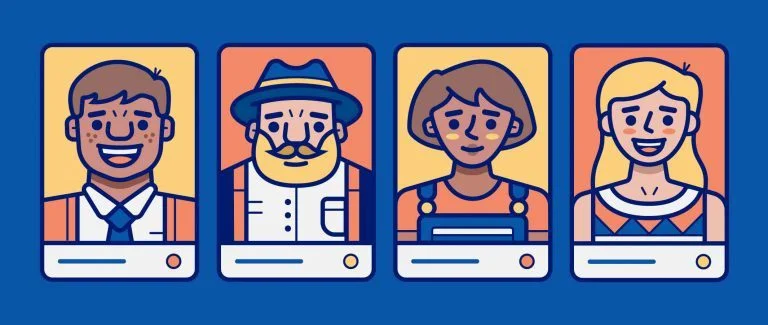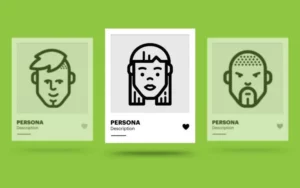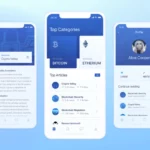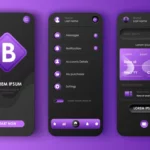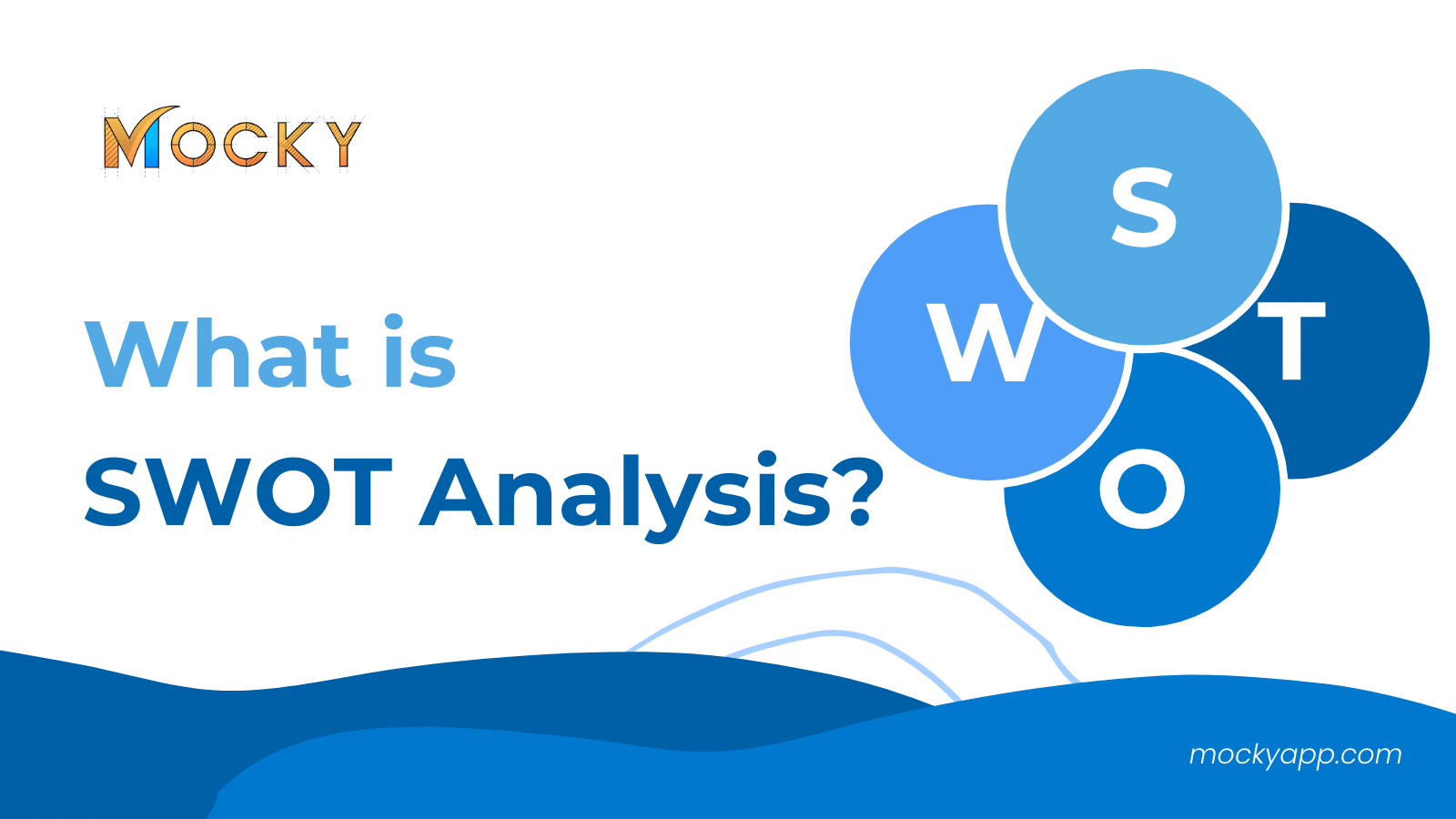Personas are one way to introduce user-centric thinking into the UX design process. Personas created and used in the right context act as an effective way to empathize and analyze the users.
This article is the continuation of our previous article Persona: Know Your Users With Fictional Characters Part-1.
To create the best persona you need to know more from your users. To know your user’s screen for their behavior, geographic, demographic, and psychographic characters.
For a traditional market, the best is to use an already established user base. They will provide you with demographic variables. If you are a beginner in this market segment, follow the survey of current users.

Examples of personas for UX designs
Decide on your questions?
While you interview your users, learn and observe them from various sources. To ensure all your subjects undergo the same research, create an interview script for homogeneity. A script will force you to learn the natural details of research participants. While you interview, it is about gaining a thorough knowledge of participants and their perspectives.
Remember, you have limited time to interview and observe your participant, so pick the most relevant questions to examine the most consistent behavior. As you fill your knowledge gaps, understand what information is most significant for your design that matches the needs and goals of your users.
An exhaustive list of questions will divert you from gaining the fundamental understanding of the user, so avoid it. Select a list of questions that extrapolate your learning.
Since the product development team lacks users intervention during your development process, your intentions should be a walk in uncharted areas of user experience to create the right persona that represents the users.
Keep these things in mind as you jot down the questions.
- Asking open-ended questions.
- Ask for more explanations for a specific story, so you discover what your team didn’t observe.
- Ask naïve questions.
This understanding of questions gives you a firm foundation to understand your users, can create the best persona for your users. For a quick start, come up with common points as jumping-off points for all your new projects using the below criteria.
- Overview
- Domain knowledge
- Goals
- Attitudes and motivations
- Process
- Environment
- Pain points
- Tools and technology
- Mental models
- Relationship and organizational structure
- Future project
- Wrap up
Access your users
Knowing your users will determine the effectiveness of your personas. Your persona will determine enough people representing research participants. Experts say, know 5-30 participants per persona or per role. The point is to get new patterns for a qualitative analysis that guides the design process.
Your trends will start emerging once you observe 5 users. Once you unearth all the patterns by gaining your deeper understanding, the diminished pattern resurfaces, and that point is the peak of your research, so you need no more research.
If you plan to observe your clients instead of questioning them, engage a relatively small group of people. To interact with a small group, you can hire a recruiting agency for a brief span.
Study your users
We use most time in interviewing the potential users. It is best to collaborate with the team members to gain insights into the observation session that might have gone unnoticed. Make yourself physically available as you interview your users. Record visually, and keep notes so the multiple sources you used to capture the interview, the more it helps to dig into the user’s behavior.
Try avoiding office places to interview. To get the right insights or direct and unfiltered interactions, conduct the interviews in a natural relaxing environment. When there is a lack of access to your direct users, interview users who are within reach of your direct users. For example, your medical solution is for the surgeons, but they hardly have time for discussions. So interview junior doctors or staff that assist senior surgeons. Such personas, created based on second-handed information, are provisional persons.
You may get the biased and filtered perspective, but it is better than nothing. Someone relevantly mapped a complete user using direct interactions.
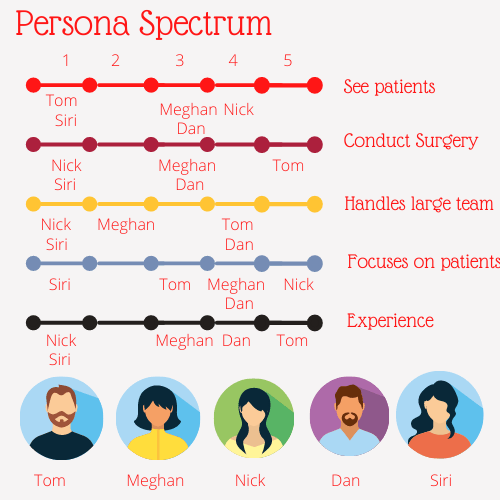
Persona Spectrum
Data analysis:
The analysis stage requires experience as you compare multiple variables of behavior and attitudes of participants. After learning your users, try finding the patterns in data. For each group of participants, rank each participant describing similar attributes ranking to discover common traits. Now each group serves as a source for particular persons.
Although designers first think that personas are roles, they are not. Roles define segmentation, a grouping of similar characteristics determined by the task performed by particular users, but personas are no roles. In case of your medical application, you could create the app for doctors, jr. doctors, nurses, and other non-medical staff. So you would require 2-3 persons to describe complete role-based users.
If you create personas for a different role, it is expected to know an influential persona. Spectrum or Likert scale is a good option to weigh your participants. For example, nurses often attain your survey’, as compared to surgeons who rarely can attempt.
We can use the spectrum for many reasons. We have a 5-20 spectrum for qualities mentioned in a particular persona.
Once your map 5-20 variables with the respective spectrum, you can identify the patterns that describe your users and volunteer.
As your qualities carry the same spectrum space, you group them into the same persona.
The participant shows a distinct pattern response resulting in multiple persons. Represent each unique pattern of behavior, attitudes uniquely into a persona.
Nutshell:
Personas bring life into stories. As designers, it’s great to know the users. Often it’s considered that persona means user, but it is not. To develop a persona, examine and observe the characteristics of 4-5 users, create the spectrum and choose the characteristics commonly seen in your users.

